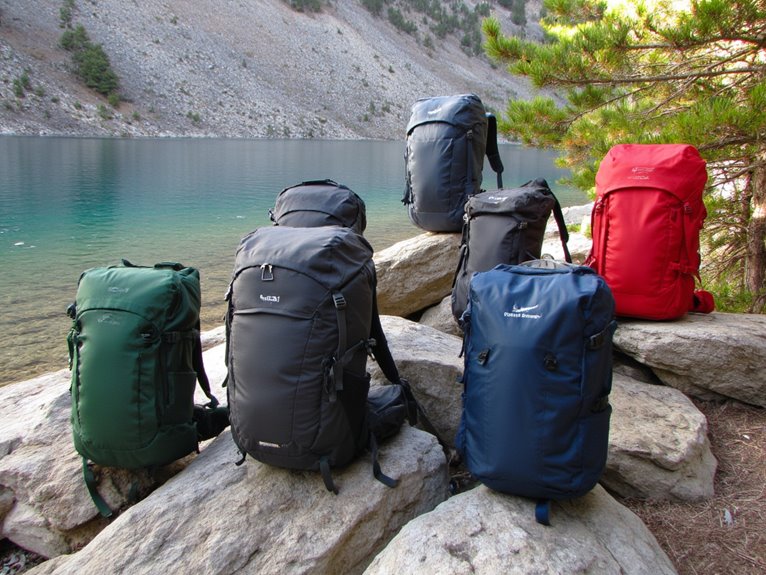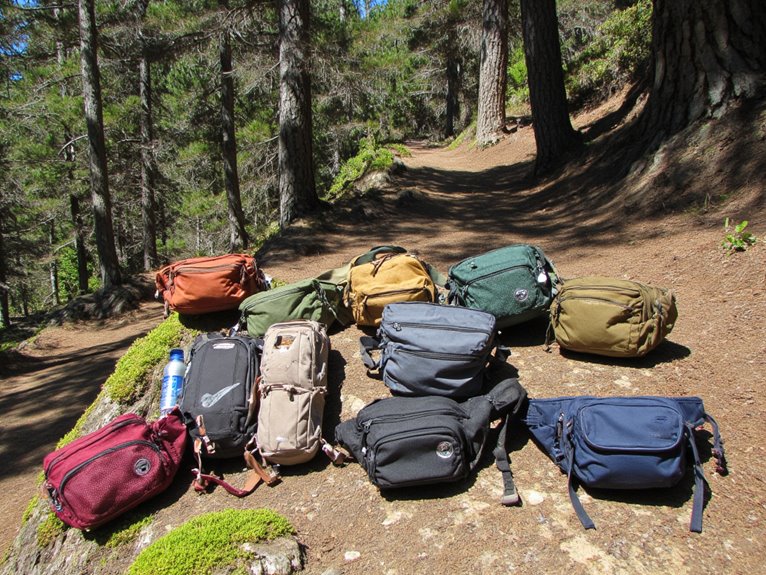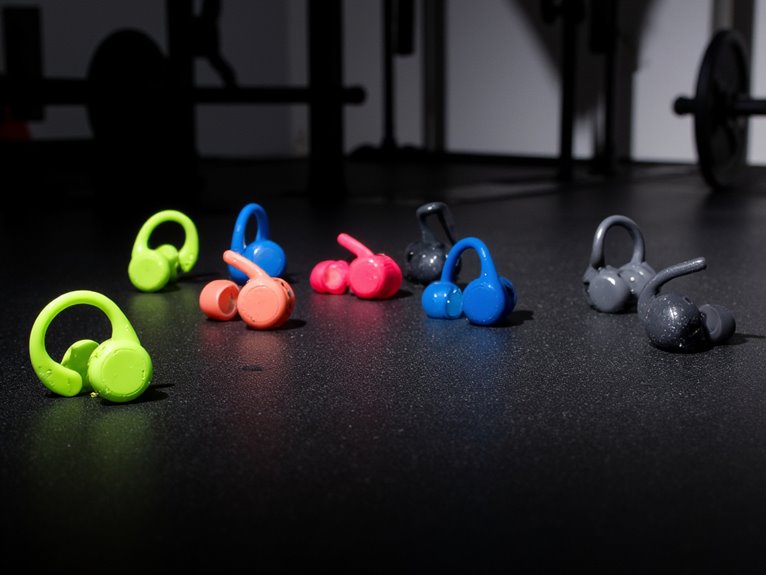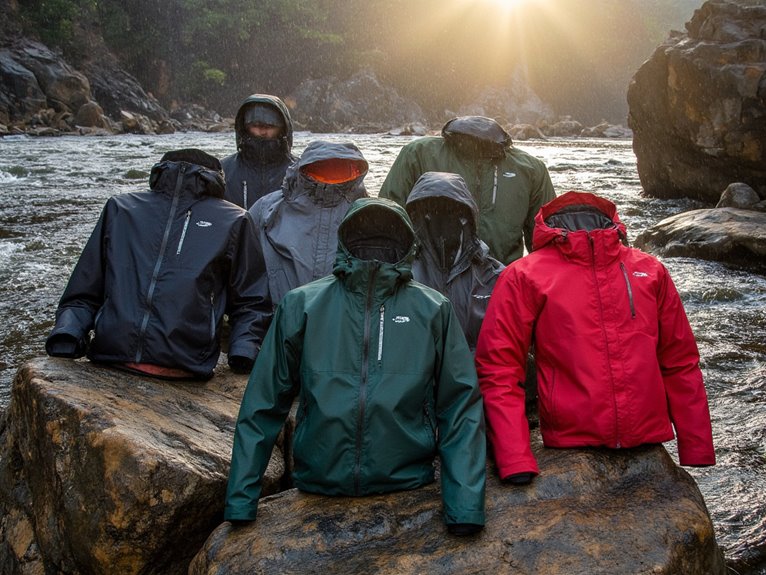How Big Is a 40 Litre Backpack?
A 40-liter backpack's actual usable space is less than its measured volume due to internal compartments and pockets. To visualize its size, consider it holds around 20-25 standard-sized water bottles or has a similar volume to a standard office wastebasket or large microwave oven. To maximize space, prioritize and pack strategically, utilizing internal features like pockets and compartments. Understanding the backpack's capacity is crucial for a comfortable and efficient packing experience. As you delve into the inner workings of a 40-liter backpack, you'll discover more about its capabilities and how to make the most of its space.
We are supported by our audience. When you purchase through links on our site, we may earn an affiliate commission, at no extra cost for you. Learn more. Last update on 15th January 2026 / Images from Amazon Product Advertising API.
Measuring Volume Vs. Actual Space
When selecting a backpack, it's essential to understand the distinction between measuring volume and actual usable space, as these two metrics are often conflated, leading to disappointment or discomfort on the trail.
Measured volume refers to the total capacity of the pack, including pockets, compartments, and nooks.
Actual usable space, on the other hand, is the amount of space available for packing gear comfortably.
A pack's volume may be 40 liters, but the usable space may be substantially less due to internal compartments, pockets, and other features that occupy space.
Understanding this distinction is vital to choosing the right backpack for your needs and ensuring a comfortable, efficient packing experience.
What Fits in a 40-Litre Backpack
A 40-liter backpack's actual usable space, once internal features and compartments are considered, can accommodate a surprising amount of gear, including a sleeping bag, tent, and clothing for a multi-day trip.
The key to maximizing space is to prioritize and pack strategically.
For example, a sleeping bag can be compressed to fit in the bottom compartment, while clothing and other essentials can be organized in the main compartment.
The backpack's internal features, such as pockets and compartments, can also be utilized to store smaller items like first aid kits, snacks, and personal items.
Comparing to Everyday Items
To put the 40-liter backpack's capacity into perspective, consider that it can hold approximately the same volume as a standard office wastebasket or a large microwave oven.
This size comparison helps illustrate the backpack's spacious interior, which can accommodate a substantial amount of gear.
For example, a 40-liter backpack can fit about 20-25 standard-sized water bottles, giving you an idea of its volume.
Alternatively, think of it as holding a small to medium-sized cooler or a large storage bin.
These everyday item comparisons provide a relatable frame of reference, making it easier to visualize the backpack's size and plan your packing accordingly.
Airline Carry-On Size Restrictions
Most commercial airlines enforce specific carry-on size restrictions, typically ranging from 22 to 24 inches in length, 14 to 16 inches in width, and 9 to 10 inches in height, which is an essential consideration when selecting a 40-liter backpack for travel.
When choosing a 40-liter backpack, it's vital to verify it meets airline carry-on size restrictions to avoid any issues during check-in or boarding.
- Measure your backpack: Confirm that your 40-liter backpack fits within the airline's specified dimensions.
- Check airline policies: Research the specific carry-on size restrictions for your airline to comply.
- Pack strategically: Organize your belongings efficiently to maximize space and avoid exceeding size limits.
Measuring Length, Width, and Height
Every 40-liter backpack's dimensions, including length, width, and height, must be meticulously measured to verify compliance with airline carry-on size restrictions.
To accurately measure your backpack, start by laying it flat on a surface, with the front side facing upwards.
Measure the length from the top of the backpack to the bottom, excluding any straps or handles.
Next, measure the width from one side to the other, ensuring to include any protruding parts.
Finally, measure the height from the back panel to the top of the backpack.
Record these measurements in inches or centimeters to compare with airline specifications.
Precise measurements will help you determine if your 40-liter backpack meets carry-on size requirements.
Packing Efficiency and Strategies
In terms of packing efficiently, maximizing space is essential.
Two strategies stand out for their effectiveness: rolling clothing to save space and utilizing packing cubes.
Roll Clothing to Save
By rolling your clothing instead of folding it, you can substantially reduce wrinkles and save up to 50% of packing space in your backpack. This simple trick allows you to fit more items in a smaller area, making it an essential strategy for efficient packing.
Reduced wrinkles: Rolling helps minimize creases and folds, ensuring your clothes look fresher for longer.
Increased space: By compressing your clothing into compact rolls, you can fit more items in your backpack.
Easier organization: Rolling allows you to stack and organize your clothing in a logical and accessible manner, making it easier to find what you need quickly.
Packing Cubes Essential
Packing cubes are a game-changer for backpackers, as they enable a more organized and efficient use of space, allowing you to fit more essentials into your bag while reducing clutter and stress.
By separating clothing, toiletries, and accessories into individual cubes, you can quickly locate what you need and prevent a messy bag.
This system also helps with compression, enabling you to fit more into your 40-litre backpack.
Additionally, packing cubes make it easier to find what you need at airport security checks or when searching for a specific item.
Invest in a set of cubes specifically designed for backpacking, and you'll wonder how you ever traveled without them.
Real-Life Examples and Scenarios
In everyday situations, selecting the right backpack size can greatly impact the comfort and efficiency of outdoor activities, travel, or daily commutes.
A 40-liter backpack, for instance, is an ideal size for a weekend trip or a short hike.
Hiking trips: A 40-liter backpack provides ample space for carrying hiking gear, clothing, and essentials for a 2-3 day trip.
Business travel: With a 40-liter backpack, you can fit a laptop, clothes, and documents for a short business trip.
Festival or concert weekends: A 40-liter backpack is perfect for carrying camping gear, clothing, and festival essentials for a fun-filled weekend.






